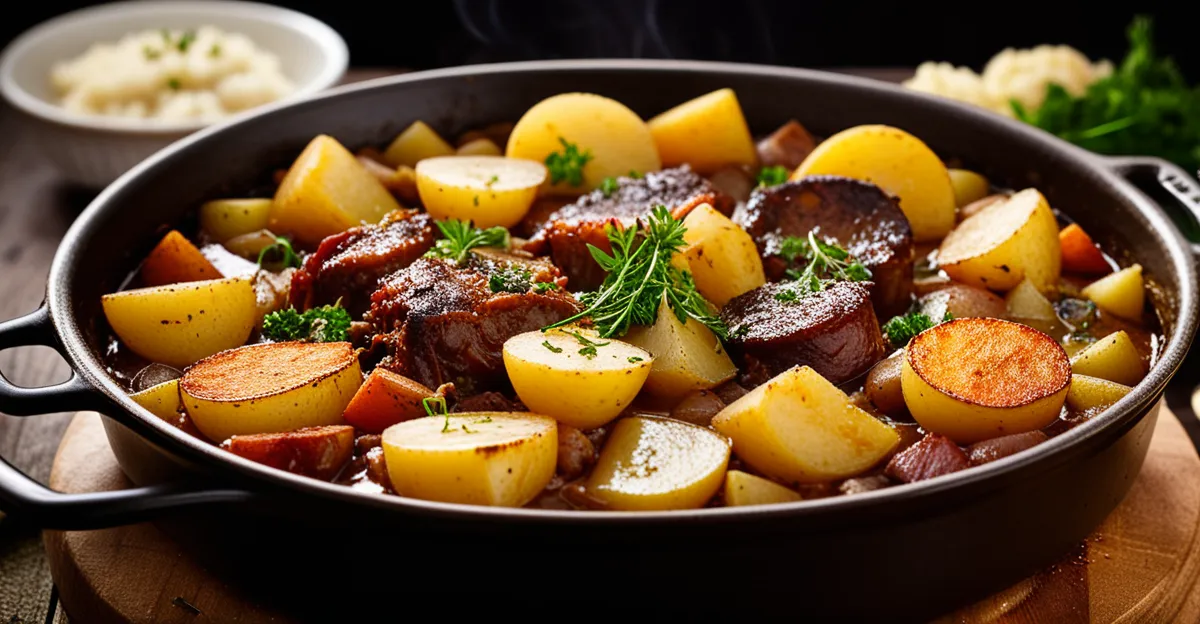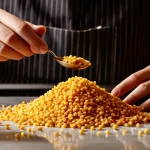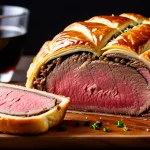Essential Ingredients for a Traditional Lancashire Hotpot
Understanding the core Lancashire hotpot ingredients is key to crafting an authentic hotpot recipe. The foundation consists of tender lamb, thinly sliced onions, and starchy potatoes. Lamb should be selected carefully; cuts like neck or shoulder, known for their rich flavor and ideal fat content, are preferred. These cuts break down beautifully during slow cooking, becoming succulent and tender.
Onions add a subtle sweetness and balance the savoriness of the meat. Fresh, firm onions sliced evenly ensure even cooking and a smooth texture. Potatoes are the signature topping; waxy varieties like Maris Piper hold their shape well while baking, creating that coveted golden crust.
This might interest you : How do you create a hearty and flavorful beef Wellington?
Optional additions historically include herbs such as thyme or bay leaves, which infuse the dish with extra aroma. Some versions introduce root vegetables or pearl onions. These variations highlight the adaptability of traditional British dishes, allowing cooks to tailor the hotpot while maintaining its essence.
Together, these ingredients define the authentic Lancashire hotpot recipe, marrying simplicity and comfort in every hearty bite.
Also to read : How Do British Ingredients Influence Global Culinary Trends?
Preparing the Ingredients Step-by-Step
Getting the foundation ready
Preparing Lancashire hotpot begins with attention to detail in each ingredient’s cut and trim. For the lamb, choose neck or shoulder cuts for their fat content, then trim excess fat but leave enough to keep the meat moist during slow cooking. Cut the meat into uniform chunks to ensure even cooking and tenderness in the finished dish.
When slicing potatoes and onions for an authentic hotpot recipe, consistency is vital. Thinly slice potatoes about 3-4mm thick; this thickness allows them to cook thoroughly and form a crispy golden crust. Onions should be sliced evenly to release their natural sweetness and maintain texture without overpowering the dish.
Layering ingredients correctly enhances flavor integration. Begin with lamb at the base, topped with sliced onions, then cover liberally with the potato slices. This structure allows the meat juices and seasoning to permeate the layers during cooking, a core aspect in traditional British dishes like Lancashire hotpot.
Mastering hotpot preparation methods ensures your final dish is rich, tender, and true to tradition, capturing the essence of a beloved British culinary classic.
Assembling and Cooking the Lancashire Hotpot
Crafting an authentic Lancashire hotpot hinges on precise Lancashire hotpot assembly. Start by layering the prepared lamb evenly in the casserole base. This foundation ensures juices infuse the dish during cooking, creating rich flavour typical of traditional British dishes. Next, add a layer of sliced onions, distributing them to soften and sweeten the meat’s robust taste.
Cover the onions liberally with thinly sliced potatoes, overlapping to form a dense, uniform crust. This potato topping seals in moisture and crisps beautifully during baking. Season the layers with salt, pepper, and fresh herbs like thyme to elevate the authentic hotpot recipe. Pour a modest amount of stock over the ingredients—enough to partially submerge the meat but not drown the potatoes. This balance is crucial for tender meat and a golden crust.
Baking the Lancashire hotpot requires slow, steady heat. Cook at a moderate temperature—around 160°C (320°F)—for 2 to 3 hours. This method melds flavours deeply and tenderises tougher lamb cuts. Avoid high heat, which can dry out the dish or burn the potato topping. By mastering these cooking methods, you achieve the comforting texture and rich taste that define the traditional Lancashire hotpot experience.
Tips for an Authentic Lancashire Hotpot Experience
Bringing tradition to your kitchen
Achieving the traditional hotpot tips that define an authentic Lancashire hotpot involves key techniques honed by British home cooking. One crucial aspect is the crispy potato topping. To get this, use thinly sliced waxy potatoes layered evenly to ensure they brown and crisp without burning. Brushing a little melted butter or dripping over the potato layer before baking can enhance golden colour and texture.
Modern ovens often have higher heat intensity than historical open hearths. Adjust baking temperatures accordingly, typically around 160°C (320°F), and cover the dish with foil if the potatoes brown too quickly. This modification helps maintain the authentic cooking techniques of slow, even cooking that tenderises meat without drying the dish.
Substitutions may be necessary, but maintaining authenticity is possible by choosing ingredients and methods thoughtfully. For example, if neck or shoulder lamb is unavailable, a similar cut with enough fat content will suffice. Avoid lean cuts that dry out during long cooking times, preserving the rich, succulent character expected in traditional British dishes.
These traditional hotpot tips support both faithful reproduction and practical adaptation, ensuring your Lancashire hotpot delivers genuine flavour and texture true to its heritage.
Serving Suggestions and Enjoying Your Hotpot
Serving Lancashire hotpot thoughtfully completes the dining experience. Traditional British dishes often pair hotpot with simple, hearty sides that complement its rich flavours. Common accompaniments include mushy peas or buttered green vegetables like cabbage or peas, adding freshness and balance. For starchier options, crusty bread or pickled red cabbage enhance the meal, providing contrast to the tender meat and crispy potato topping.
Presentation can be rustic yet inviting—serve the hotpot directly from the casserole dish to emphasize its home-cooked appeal. Using heavy, sturdy plates with simple cutlery suits the traditional British dining atmosphere. Garnishing with a sprinkle of fresh parsley can add a pop of colour without overpowering the dish’s authentic flavours.
Leftover Lancashire hotpot reheats well, making it a practical choice for family meals. To preserve texture, reheat gently in the oven rather than the microwave, maintaining the potato topping’s crispness. Cover the dish loosely with foil to prevent drying out during reheating.
These serving Lancashire hotpot ideas ensure that this classic dish shines on any table, staying true to its roots while inviting warm, comforting enjoyment. This approach reflects the heart of British meal ideas—simple, satisfying, and made to share.
Exploring the History and Heritage of Lancashire Hotpot
Linking tradition and regional identity
The history of Lancashire hotpot traces back to the 18th century as a practical, nourishing meal for working-class families in Northern England. This hearty stew, combining affordable cuts of lamb with staple vegetables, became a staple of British culinary heritage due to its simplicity and satisfying nature during industrialisation.
Lancashire, a county in North West England, holds regional pride in the hotpot’s origins. The dish reflects local agricultural practices, using lamb and potatoes readily available in the area. Its development was also influenced by traditional cooking methods—slow simmering in a covered pot, often an earthenware casserole—which suited the needs of busy households seeking a warming, one-pot meal.
The regional hotpot origins underscore its role in communal and family dining. Lancashire hotpot was commonly prepared in large portions, sharing the nourishing benefits across households. It remains emblematic of Northern English cuisine’s resourcefulness and comfort food culture.
Understanding this context enhances appreciation for the dish’s place in traditional British dishes. It highlights why the hotpot is more than a recipe—it is a culinary symbol of heritage, resilience, and local identity in Lancashire and beyond.




